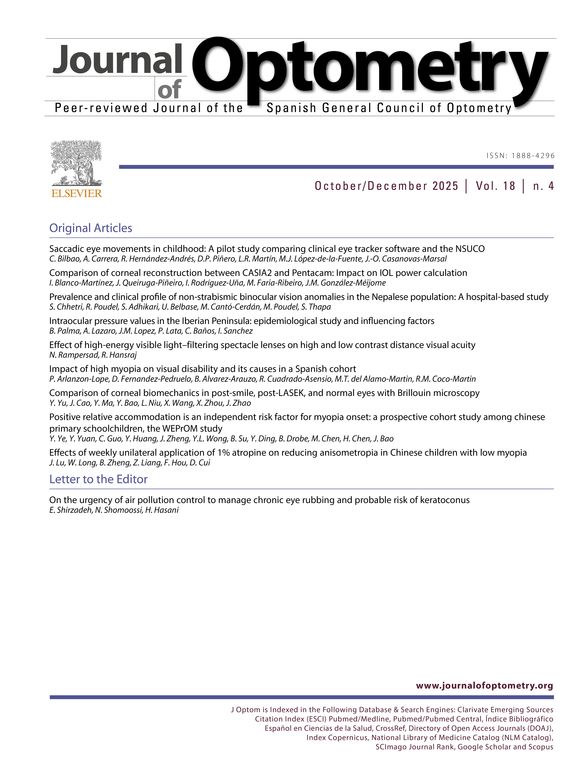We would like to thank London and Erdinest for their comment and interest in our study entitled “Contrast sensitivity function with soft contact lenses” in which we had evaluated contrast sensitivity function with spectacles and contact lenses.1 In this longitudinal study, we found better CSF with contact lenses in comparison to spectacles. Furthermore, the CSF with CL was found similar after three months of lens wear.
We totally agree with that contrast sensitivity evaluation is an integral part of standard practice and that is why this study was conducted.
The baseline CSF with spectacles was measured with available spectacles. So, as presented in the limitation of the study, that may not be fully corrected the vision; however, all subjects except one had 6/6 visual acuity. So, we think that they were fully corrected. The authors also suppose that there might be the effect of glare, coating or any surface treatment of the spectacles on the CSF,2 nonetheless, these are out of the scope of the study.
We were aware about the effect of dry eyes on contrast sensitivity function.3 As mentioned in an earlier study, we performed a thorough slit-lamp examination including evaluation of NIBUT as well as Schirmer’s test to ascertain the inclusion criteria of CL wear.4 So, we suppose that there was not a significant influence of the tear film quality and quantity on the contrast sensitivity in our subjects. Yes of course it would be interesting if we measured lipid content and quality of tear debris, however, it was out of the scope of this study.
There was grade ‘0’ lens deposit on the worn lenses as we did not observe any deposits with the slit-lamp examination5 and nobody complained about the unbearable discomfort. We were aware that SCLs can absorb different chemicals from lens care solutions. As far as our knowledge, no study has been done in the past to assess the effect of multipurpose solution on monthly disposable contact lenses and contrast sensitivity. We are agreed with London and co-worker that it could be exciting if we could compare the contrast sensitivity function with peroxide solution and multi-purpose solutions.
CSF was examined with CL during the first visit and after two months of lens wear. We were aware about the condition of the lenses, however, we measured the CSF over worn lenses as the purpose of the study was to determine the effect of contact lens on CSF. It could be more interesting but measuring MTF of the lenses was not the scope of the study.
Financial disclosureNone.
Conflict of interestNone.







